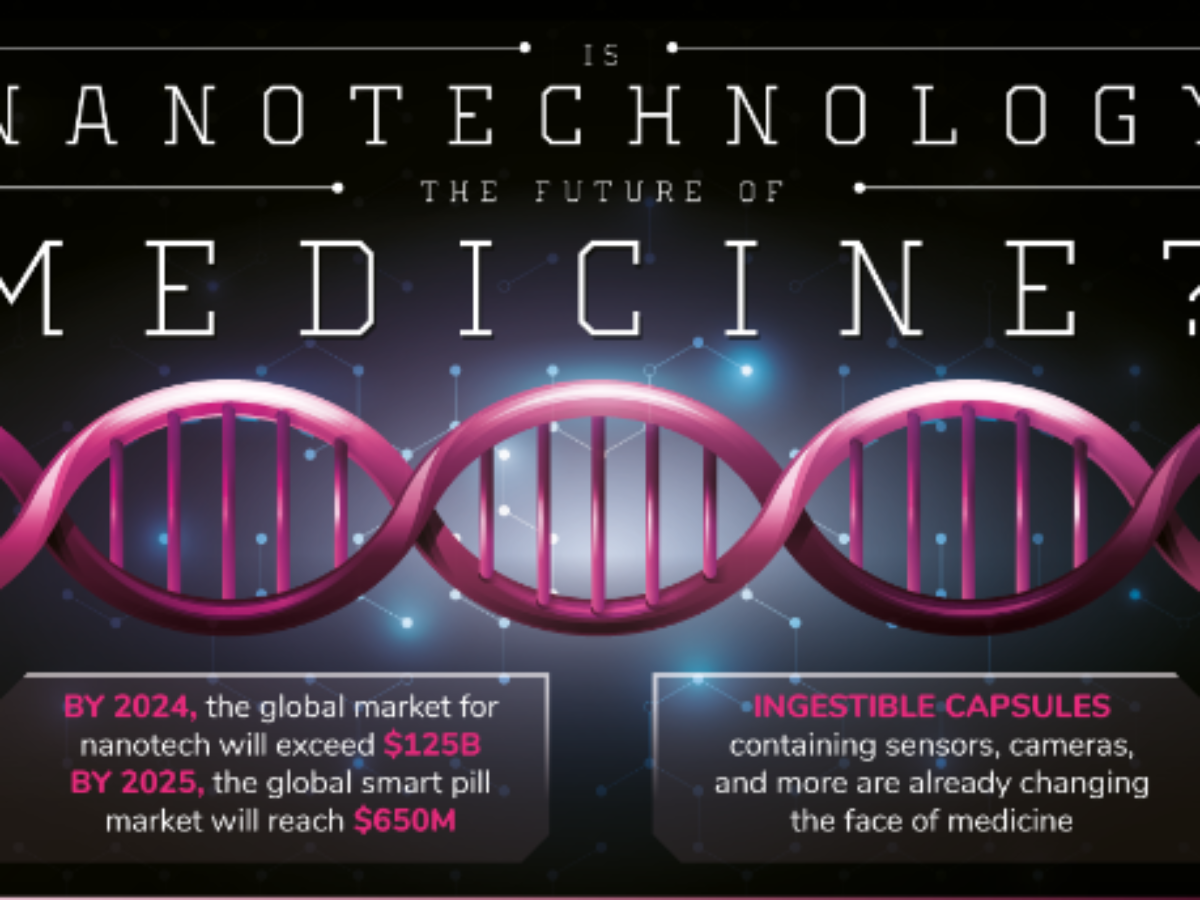The future of nanotechnology in medicine – infographic


Around the world, researchers are increasingly thinking smaller to solve some of the biggest problems in medicine.
Though most biological processes happen at the nano level, it wasn’t until recently that new technological advancements helped in opening up the possibility of nanomedicine to healthcare researchers and professionals.
Today’s infographic, which comes to us from Best Health Degrees, highlights some of the most promising research in nanomedicine.
What is Nanotechnology?
Nanotechnology is the engineering of functional systems at the molecular level. The field combines elements of physics and molecular chemistry with engineering to take advantage of unique properties that occur at nanoscale.
One practical example of this technology is the use of tiny carbon nanotubes to transport drugs to specific cells. Not only do these nanotubes have low toxicity and a stable structure, they’re an ideal container for transporting drugs directly to the desired cells.
Small Systems, Big Applications
While many people will be most familiar with nanotech as the technology powering Iron Man’s suit, real world breakthroughs at the nanoscale will soon be saving lives in healthcare.
Here are a few ways nanotechnology is shaping the future of medical treatment:
1. Smart Pills
While smart pill technology is not a new idea — a “pill cam” was cleared by the FDA in 2001 — researchers are coming up with innovative new applications for the concept.
For example, MIT researchers designed an ingestible sensor pill that can be wirelessly controlled. The pill would be a “closed-loop monitoring and treatment” solution, adjusting the dosage of a particular drug based on data gathered within the body (e.g. gastrointestinal system).
An example of this technology in action is the recent FDA-approved smart pill that records when medication was taken. The product, which is approved for people living with schizophrenia and bipolar disorder, allows patients to track their own medication history through a smartphone, or to authorize physicians and caregivers to access that information online.
2. Beating the Big C
Nearly 40% of humans will be diagnosed with cancer at some point in their lifetime, so any breakthrough in cancer treatment will have a widespread impact on society.
On the key issues with conventional chemotherapy and radiation treatments is that the body’s healthy cells can become collateral damage during the process. For this reason, researchers around the world are working on using nano particles to specifically target cancer cells.
Oncology-related drugs have the highest forecasted worldwide prescription drug sales, and targeting will be a key element in the effectiveness of these powerful new drugs.
3. Diagnostics
Medical implants — such as knee and hip replacements — have improved the lives of millions, but a common problem with these implants is the risk of post-surgery inflammation and infection. In many cases, symptoms from an infection are detected so late that treatment is less effective, or the implant will need to be replaced all together.
Nanoscale sensors embedded directly into the implant or surrounding area could detect infection much sooner. As targeted drug delivery becomes more feasible, it could be possible to administer treatment to an infected area at the first sign of infection.
Examples like this show the true promise of nanotechnology in the field of medicine. Before long, gathering data from within the body and administering treatments in real-time could move from science fiction to the real world.
Image: Visual Capitalist
Subscribe to our fee @AuManufacturing newsletter here.
Topics Manufacturing News
@aumanufacturing Sections
Analysis and Commentary Awards Defence Manufacturing News Podcast Technology Videos










